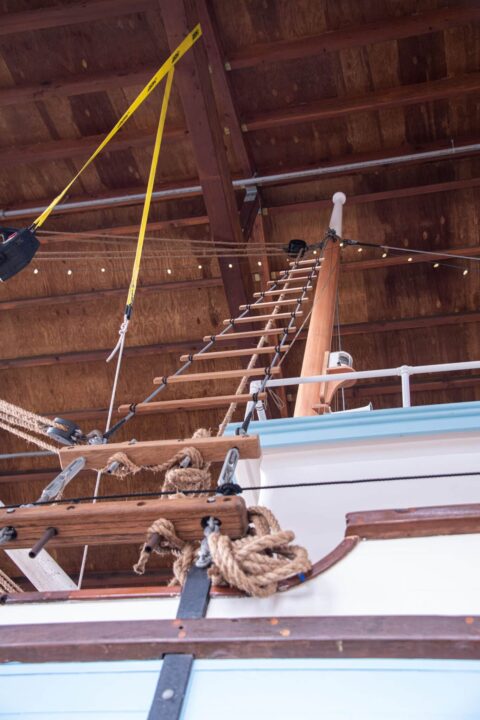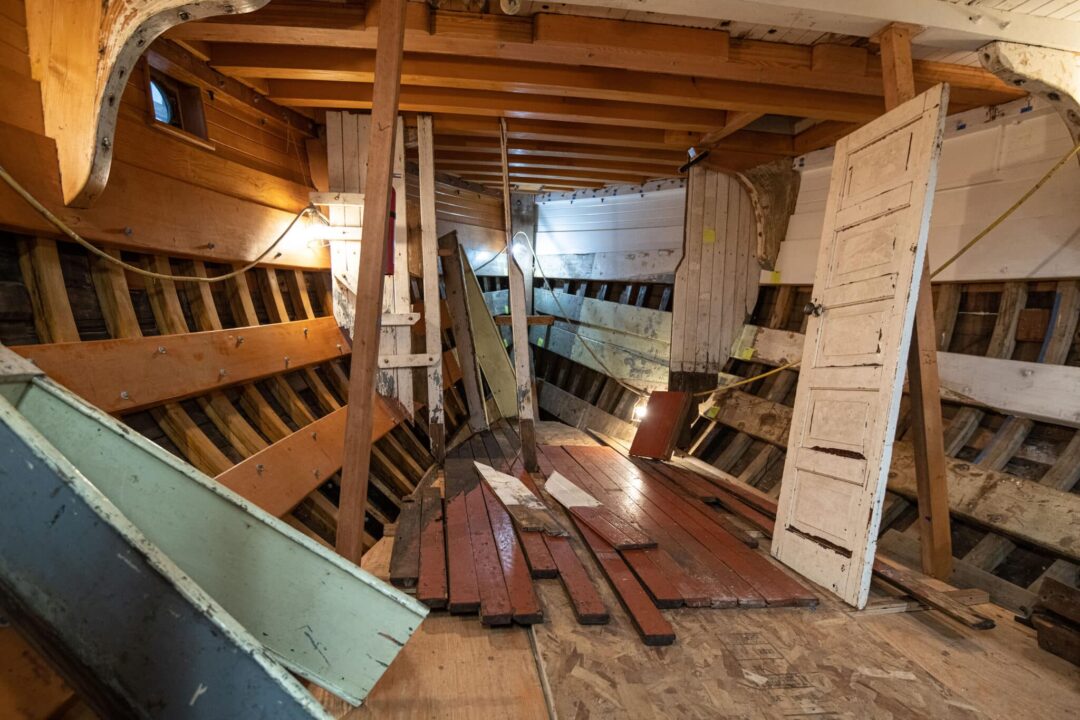Resource Library


Best Practice Report: “On the Ways: The remarkable restoration of the F/V Shenandoah”
Use this for: if you have a historic vessel in your museum collection and are thinking about restoration and interpretation.
by Stephanie Lile, Director, Harbor History Museum
When the Shenandoah slid down the ways in 1925, no one envisioned her as a museum boat. She was 65 feet of fish-hauling tender, her engine room lit with modern electric lights, and a mighty towbit bolted to her work deck. Her launch helped catapult Croatian immigrant Nick Bez (born Nicoli Bezmalinovich) into a multimillionaire “cannery man,” founder of Peter Pan Seafood. Her launch was also the pride of skipper Pasco Dorotich, who had built a boat that would pass from father to only son.

Most old wooden boats riddled with rot and fungus get munched up. The big metal claws of shipyard demolition machines eat them for lunch. But by the twists and turns of historic fate, a handful of boats—by luck and pedigree—float into museum collections and are preserved for future generations. The Shenandoah is one such vessel. Some would think she’s the lucky one. Truth is, we humans, dropped into the 21st century, are the ones who are granted the magic looking glass. Through preservation efforts on the Shenandoah, we can see into a past of massive forests, abundant salmon runs, and family enterprise. We can see lost days of fish traps on Alaskan river mouths, three generations of female crew, and even the secret summer of an aspiring rock star pining for the moment he’d step from work deck to soundstage.
The Shenandoah left active service as a fishing vessel in 1998. Now, she finds her home at the Harbor History Museum in Gig Harbor. “Most restoration is simply long overdue maintenance,” says Riley Hall, shipwright on the Shenandoah since 2018. Boats need ongoing care, and the preservative qualities of saltwater only go so far.
Getting to know the language of Maritime Washington
- Ways: The slanted tracks at boatyards by which boats were hauled out of and into the water for repair and construction.
- Towbit: A large metal T-shaped cleat to which a barge or boat could be tied for towing. Towbits were bolted through the deck at the mid-section of the boat for optimum stability.
- Knees: Triangular braces, originally made from the naturally curved bends in trees at trunk and branches, to hold decks or secure benches.
- Bulwarks: The “vertical sides” of a boat, mainly at the bow.
- Conservation: The act of stopping decay at a singular point in time.
- Restoration: The process of reconstructing and/or rehabilitating an object to its original “like new” form.
Hall and his dedicated crew of volunteers have worked through each section of the boat with surgical precision to remove rot, treat fungus, and restore the strength of the boat’s ancient timbers and knees. When Hall came on board, he brought a unique vision to the project. He’d been inspired by the Asgard, another remarkable museum boat on view at the National Museum of Ireland. Hall’s idea would make all those math teachers who chant “show your work” glow with pride. Because showing the work was exactly the idea. Not only do Hall and his crew work on the boat in full view of visitors to the Harbor History Museum, they are going a step beyond to preserve that work for future visitors to see.
Because the boat is not going back into the water, Hall proposed a unique restoration plan. He would clear coat the port side of the boat to show the delicate conservation and restoration techniques used to preserve as much of the original wood planking as possible—giving guests a peek at the meticulous process. The starboard side would be fully restored from frames to paint and authentically rigged to how Shenandoah would have appeared on the fishing grounds of Puget Sound and beyond. Additionally, the “crumble-in-your-hand” rotten bulwarks would be reconstructed to their original 1925 configuration on the port side and their contrasting 1950s rebuild on the starboard. It’s a preservation approach rarely seen, but for this project, it really works.


A project like this is a massive undertaking, but the Shenandoah restoration crew is undaunted. Each person has brought special talents and interests to the project. Last October, the crew set a fully restored 8,000-pound Atlas engine into the Shenandoah’s hold, thanks to the dogged determination of retired chief engineer Craig Johnson. Johnson volunteered his time and expertise to breathe life into the rusty 1936 engine, which had originally been in the fishing boat Norman B. Even though the engine doesn’t run and the boat isn’t going back into the water, the engine-vessel pairing brings a unique authenticity to the project.
Longest with the crew are John McFerran and Orrin Souers, who have been working on the project since the boat was moved to the museum site in 2009. Their efforts, and those of every volunteer on the project, will have a lasting impact on future generations. The museum has recently completed a $2.5 million capital campaign to enclose the Shenandoah’s open-air gallery and create a unique exhibit plan that allows guests to explore “under the waterline” and “at the waterline” of the vessel.
As for the boat’s early fishing crews, there are still some walking the planet and reliving those summers of piling net. In some cases, the Shenandoah was like Vegas—what happened aboard stayed aboard—but more frequently, as restoration efforts bring her back to life, those stories have emerged. A young Krist Novoselic, bass player for Nirvana, did step from boat deck to rock stage. Old Tom Maddock, who fell overboard in 1973, lived to tell his sons the harrowing tale. Even “little” Amanda Janovich, whose earliest days on the fishing crew were spent sleeping in a galley drawer while her mom cooked for the crew, has memories of picking fish and breathing diesel.

Today, the Shenandoah is back on the ways, much as she was just before her 1925 launch day at Gig Harbor’s Skansie Shipyard. “Dry-docked” in the Harbor History Museum’s Maritime Gallery, she’s had a full career as tender, seiner, and now as teacher. With the gallery enclosure construction starting this summer, she’ll be protected from the weather and ready to celebrate her 100th launch day in 2025.

Editor’s Note: in June 2023, the Harbor History Museum received an Award of Excellence from the American Association for State and Local History (AASLH) for their work on the Shenandoah. The Award of Excellence is part of AASLH’s Leadership in History Awards, the most prestigious recognition for achievement in the preservation of state and local history. Congratulations to the Harbor History Museum for this well-deserved recognition!
All photos in article courtesy of the Harbor History Museum.









